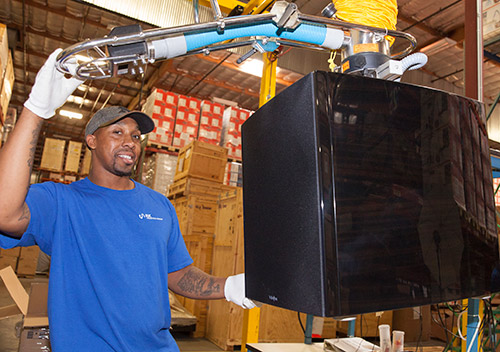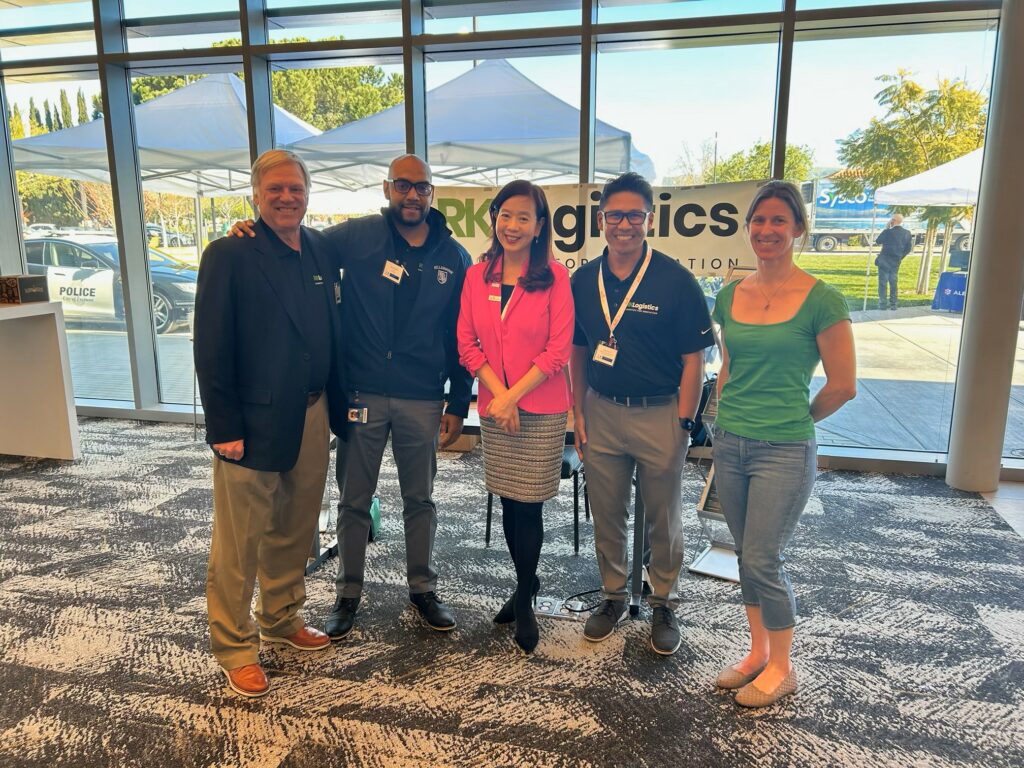Editor’s note: This story appeared in the March 2020 issue of DC Velocity magazine and contains an interview with RK’s Rock Magnan discussing the company’s deployment of the Deposco eCommerce fulfillment suite, and how it’s helping RK customers successfully meet the challenges of online order management and fulfillment
Looking for a new WMS? Make sure it’s social
There are many things to consider when choosing a new warehouse management system, but the most important may be whether it will “play well with others” in a high-tech DC.
Warehouse fulfillment trends and requirements change every few months in the age of e-commerce and omnichannel operations. In response to soaring retail competition and consumer expectations, DCs’ responsibilities have now expanded well beyond simple store replenishment to include complex fulfillment tasks that support demands for overnight shipping, click-and-collect service, and everything in between.
However, warehouse software is often slow to react. Many DCs are still using outdated “legacy” tech to meet modern demands, saying they are loath to upgrade because of the cost of new platforms, corporate red tape, and an effort to wring full return on investment (ROI) from existing systems.
One of the best examples of this conundrum is warehouse management software (WMS), a key foundational element in any fulfillment operation and one that’s essential to executing complex operations like waveless picking. Although many companies are discovering their dated legacy WMS does not support those advanced fulfillment techniques, they still find it hard to exchange an old but trusted solution for a promising but unknown alternative.
When DC leaders finally pull the trigger and decide to upgrade, they must weigh a host of selection criteria, ranging from cost to training to IT (information technology) support. But across the industry, experts say that one consideration outweighs the others: Can the new WMS integrate with the wide array of other software platforms around it? A modern WMS needs to do more than just manage a warehouse; it needs to interface with other technology inside the DC as well as with systems used by outside customers.
WMS SOFTWARE BECOMES MORE “AWARE”
To meet the demands of today’s e-commerce operations, many experts recommend a “social” WMS—one that exchanges data easily with other warehouse software as well as with outside partners’ and customers’ systems. That can require many connections; the number of logistics software platforms used in DCs has multiplied in recent years with the advent of new offerings such as warehouse control systems (WCS), warehouse execution systems (WES), labor management systems (LMS), and enterprise resource planning (ERP) software.
Together, those systems are designed to automate material handling operations and help DCs cope with the rapid growth of e-commerce and omnichannel operations, which are forcing fulfillment centers to ship high volumes of small orders (to individual consumers) instead of large orders to a small number of retail stores, says Mark Dickinson, director of enterprise solutions at material handling solutions provider SSI Schaefer.
To tackle that challenge, the best WMS software will connect data from various platforms to create an interactive web, he says. For example, a WMS could allow a WES to send a query to an LMS, and then use what it “learns” to match the workload with the available labor—for example, sending a queue of orders to a part of the warehouse with plenty of staff on hand instead of to a more crowded zone. And warehouse management software increasingly needs to integrate with outside partners’ systems as well, to build a complete view of supply chain operations.
“There are big gains to be made in interoperability,” Dickinson says. “Not like in Industry 4.0 or the Internet of Things, but in a connected ecosystem of fulfillment software, so modular software units have an ‘awareness’ of how what they’re suggesting connects to other pieces.”
NO MORE “FAILURE TO COMMUNICATE”
To see the advantages that a social WMS can bring to an operation, you need look no further than RK Logistics, a Fremont, California-based third-party logistics service provider (3PL). Until recently, the firm had been using a dated software system that performed to its original specifications just fine but was now struggling to keep up with the evolving demands of an e-commerce age.
RK Logistics knew it had to expand its capabilities to provide fulfillment solutions for the growing number of RK clients who were using online retailers and e-commerce marketplaces, and the key to that growth was finding software that could easily exchange data with other systems, the company says.
“Pulling orders, shipping orders, managing inventory—all that is pretty well developed and hasn’t changed much over the last 20 years,” RK Logistics President Rock Magnan says. “But what has changed is the need for your customer and your customer’s customer to interface with your WMS—and to place orders—in real time.”
Specifically, the company needed a WMS platform that could integrate with a broad array of software programs. “Inside the building, it still needs to interface with functions like our accounting system, labor management, payroll, and metrics management,” Magnan says. “But our upgrade was more about its ability to interface with our customers, so when they buy a product, it’s already reserved in our system, so we know we’ve got the inventory. And then our system sends out the tracking number for UPS or some other carrier directly to the end customer.”
After looking at a dozen WMS offerings, RK Logistics chose a product from Alpharetta, Georgia-based Deposco Inc., a provider of omnichannel warehouse management and order fulfillment software. Key to that selection decision was Deposco’s experience with integration products and its menu of pre-built “modules” enabling rapid plug-and-play connections with dozens of enterprise resource management, warehousing and order management, e-commerce, and retail online ordering platforms, RK Logistics says.
Those tight integrations now allow a direct feed of orders from each client’s system into RK’s version of the cloud-based Deposco software, which then provides instructions to the RK fulfillment workers who pull, pack, and ship the orders. In the meantime, the software provides each client with complete inventory and order-cycle visibility throughout the process.
CARE AND FEEDING OF A NEW WMS
Buying a social WMS product to run your warehouse and communicate with other technology platforms is a critical first step toward keeping pace with the fast-changing world of e-commerce. But even the newest software will soon become obsolete if it’s not updated regularly. A successful WMS upgrade requires a commitment on the user’s part to follow the vendor’s update schedule, says Adam Kline, senior director for product management at WMS vendor Manhattan Associates.
Most software products—whether it’s a WMS or the operating system on your laptop—push update reminders out to their users several times a year. Those new versions can include bug fixes, provide protection against new cyberthreats, or improve efficiency. However, not everyone installs them because the changes can also disrupt connections to other systems.
Kline likens the situation to a consumer who’s happy using an outdated smartphone but one day discovers the latest apps no longer run on that old version of the Android OS. While the consumer might be inconvenienced if Microsoft Office or Powerpoint no longer works on their phone, the consequences of failing to update an operating system could be far more severe for today’s fast-paced DC operations—especially in sectors like retail, pharmaceuticals, high tech, or food and grocery, he says.
“It’s a slippery slope, because there’s also change from an infrastructure perspective: You might need to update the OS on a server, add the new version of Linux, or change a database that’s no longer supported by Oracle,” Kline says. “For a while, you were able to patch those holes, like the guy in the TV ads with the waterproof ‘Flex Tape,’ covering holes leaking water. It works for a while, but in the end, it’s just tape.” The takeaway for DCs (and tape guys): You cannot rely on patches forever.
WORKING TOWARD THE SAME GOAL
Warehouse operators, retailers, and 3PLs are all looking for an edge in the rush to provide fast, cheap, transparent fulfillment. Swapping out a legacy WMS for a shiny new version can be an important part of that arms race, but it’s important to remember that no software product runs on an island.
Instead, warehouse technology in the e-commerce era must be social, experts say. The optimal WMS products are those that can play well with others, seamlessly exchanging data with other software platforms and automated warehouse equipment as they work together toward a common goal.



